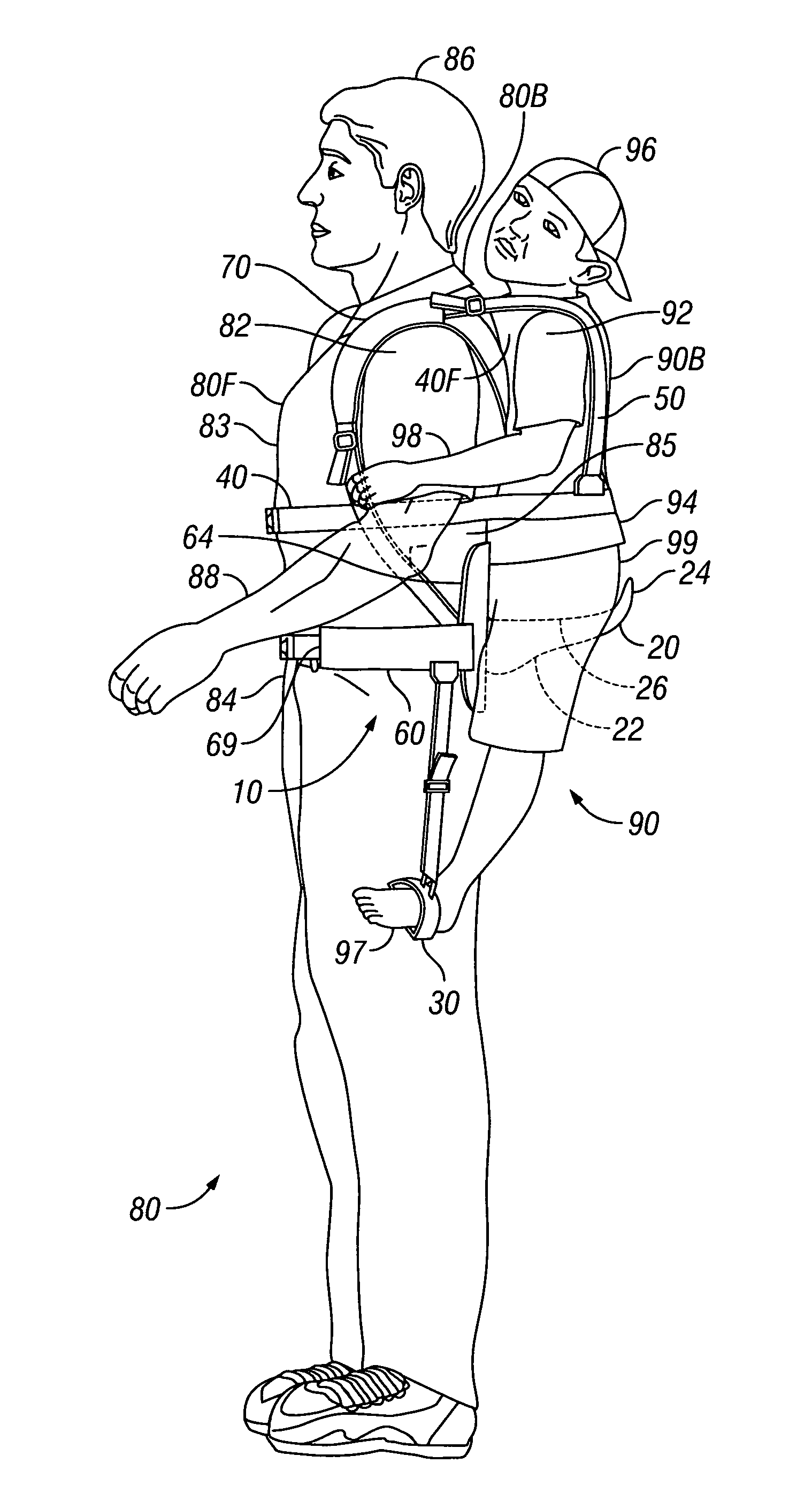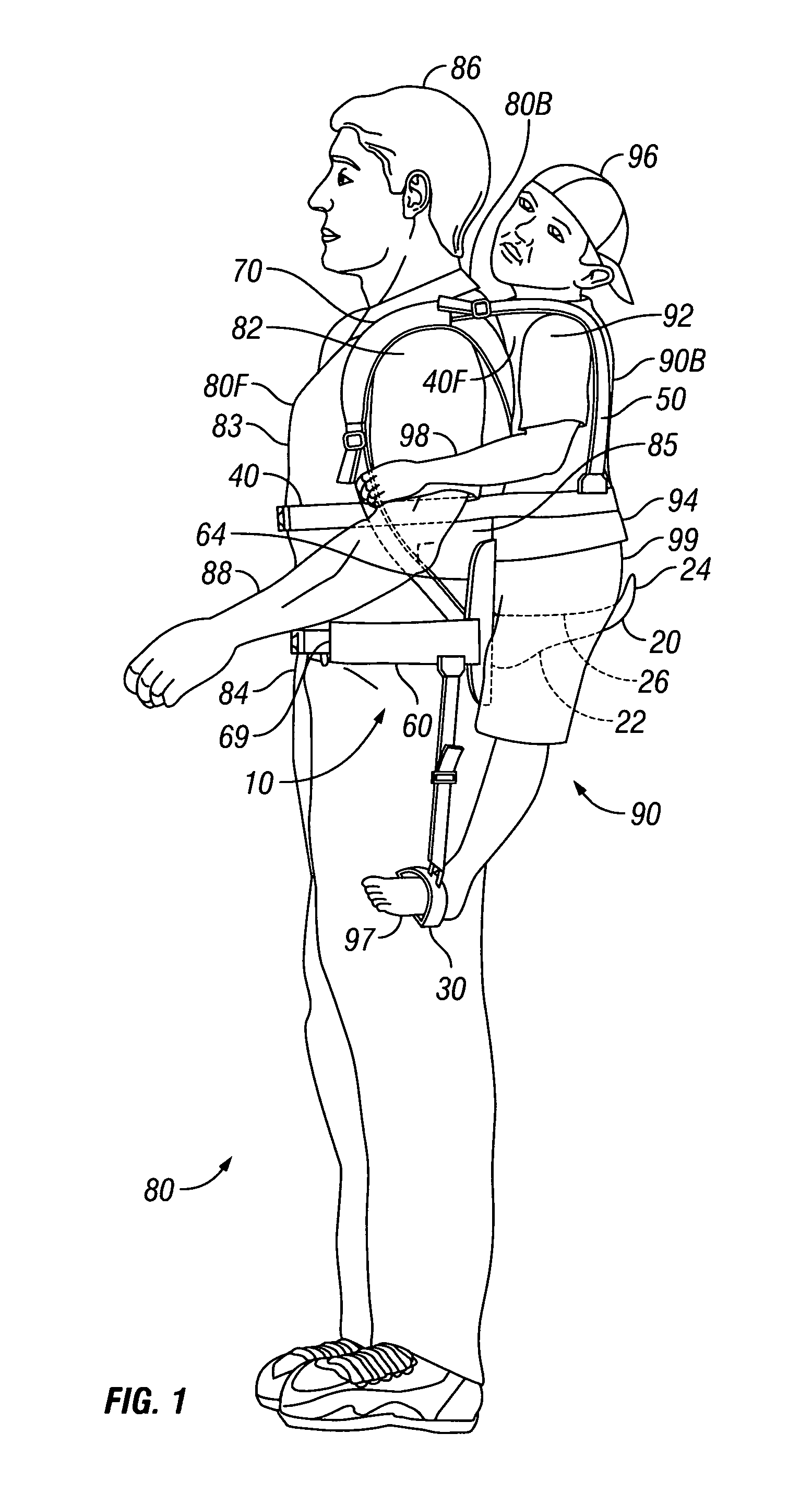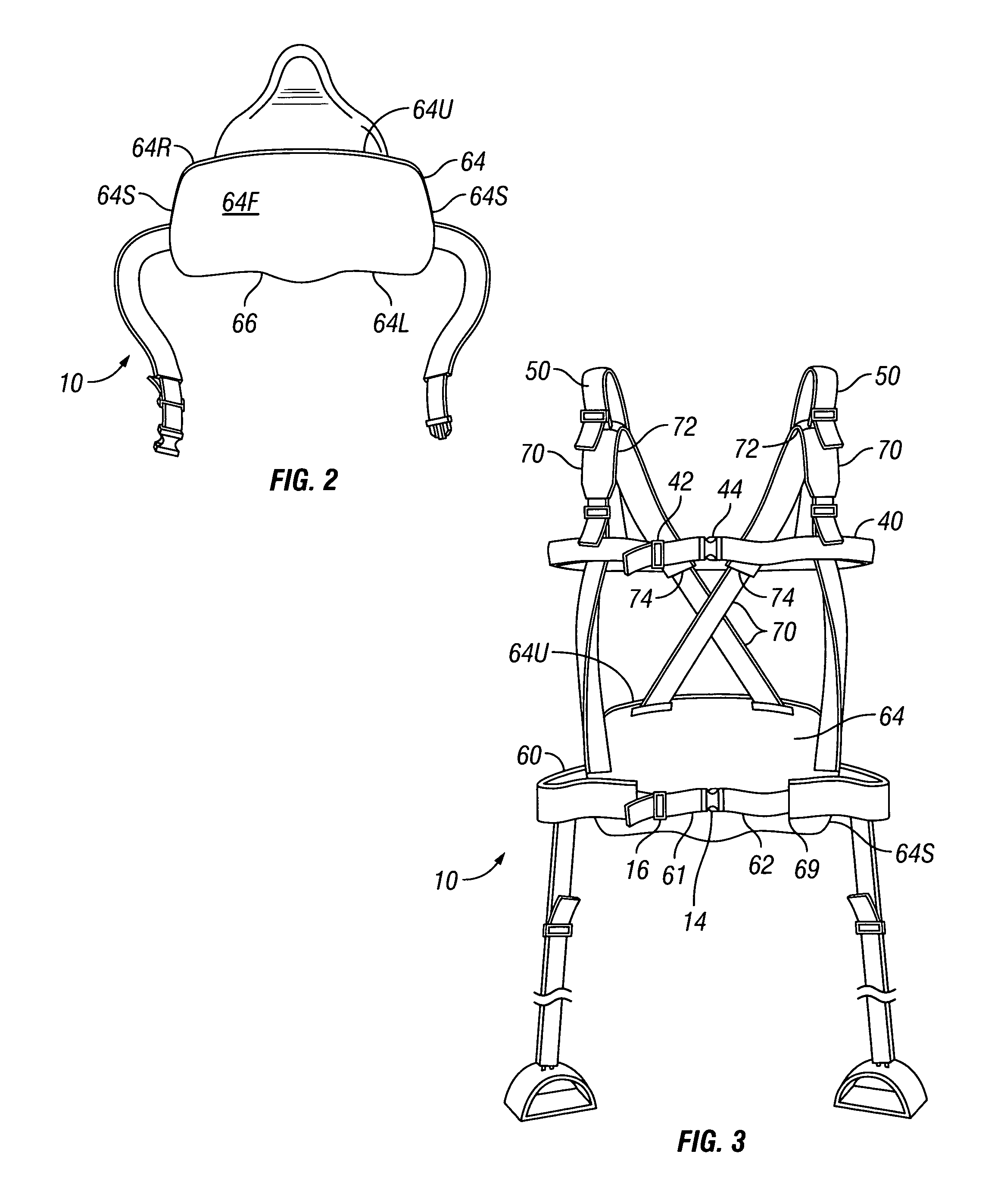Device for carrying toddlers and small children on an adult wearer's back
a technology for which is applied in the field of carrying toddlers and small children, can solve the problems of becoming difficult for parents to carry babies with such one-handed carrying, young children, however, and becoming tired, and achieve the effect of comfort and safety
- Summary
- Abstract
- Description
- Claims
- Application Information
AI Technical Summary
Benefits of technology
Problems solved by technology
Method used
Image
Examples
Embodiment Construction
FIG. 1 illustrates an adult wearer 80, wearing a carrying device 10 according to the present invention. The carrying device 10 is being used to support and secure a child 90 in a “piggyback” fashion with respect to the adult wearer 80. The adult has a front 80F, a back 80B, shoulders 82, an abdomen 83, a waist 84, a lower back 85, a head 86, and arms 88. The child 90 has a front 90F, a back 90B, shoulders 92, a waist 94, a head 96, feet 97, arms 98 and a seat 99. Note that as used herein, “adult” and “child” can be broadly defined as larger and smaller persons, suitably sized for using the device according to the present invention as indicated in the description and accompanying drawing figures. For example, the adult wearer could be a teenager, carrying a younger child. In addition, both the adult wearer 80 and child 90 illustrated in the accompanying drawings are male, and thus the description is written consistently therewith. Clearly, however the use of the present invention as ...
PUM
 Login to View More
Login to View More Abstract
Description
Claims
Application Information
 Login to View More
Login to View More - R&D
- Intellectual Property
- Life Sciences
- Materials
- Tech Scout
- Unparalleled Data Quality
- Higher Quality Content
- 60% Fewer Hallucinations
Browse by: Latest US Patents, China's latest patents, Technical Efficacy Thesaurus, Application Domain, Technology Topic, Popular Technical Reports.
© 2025 PatSnap. All rights reserved.Legal|Privacy policy|Modern Slavery Act Transparency Statement|Sitemap|About US| Contact US: help@patsnap.com



